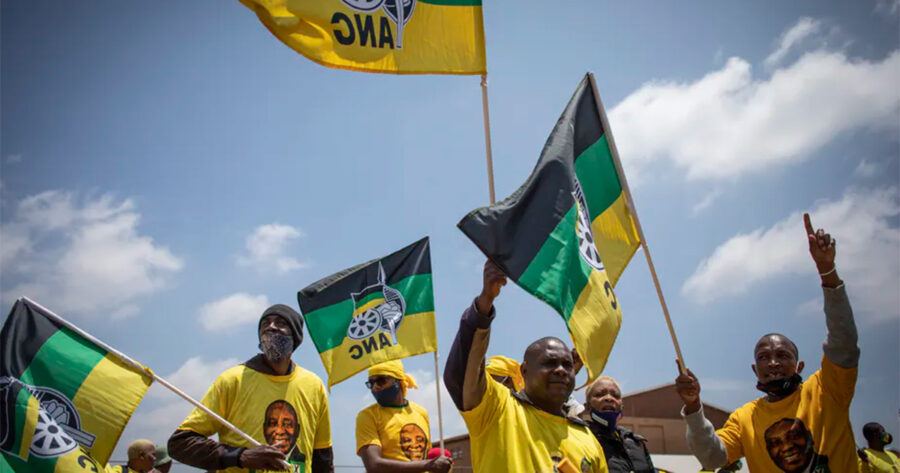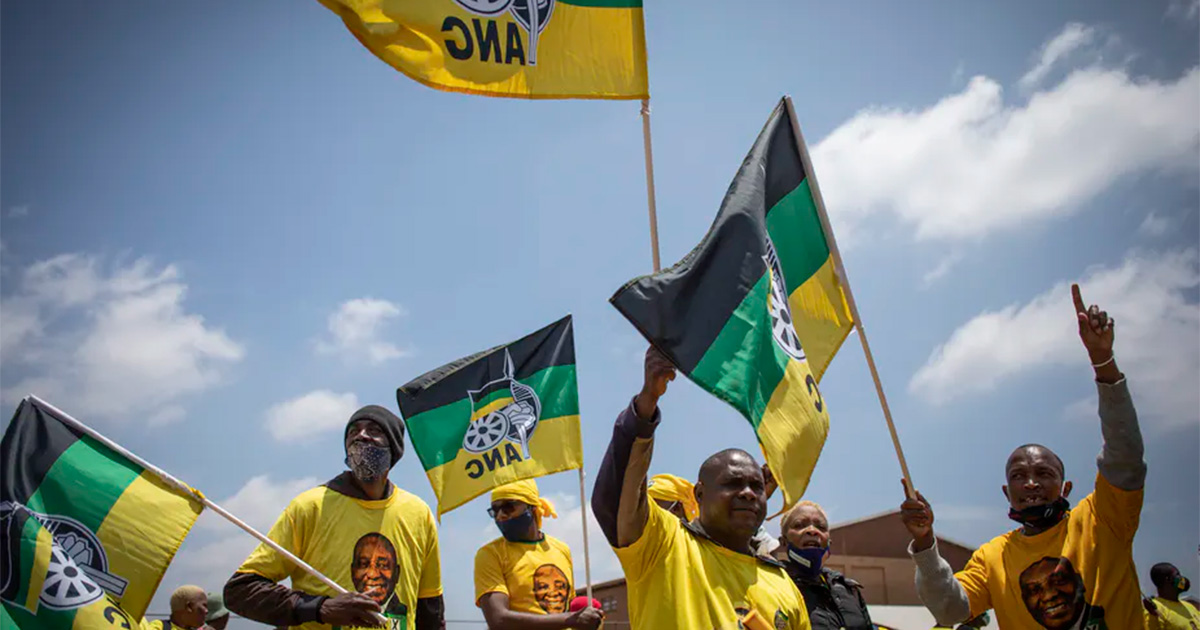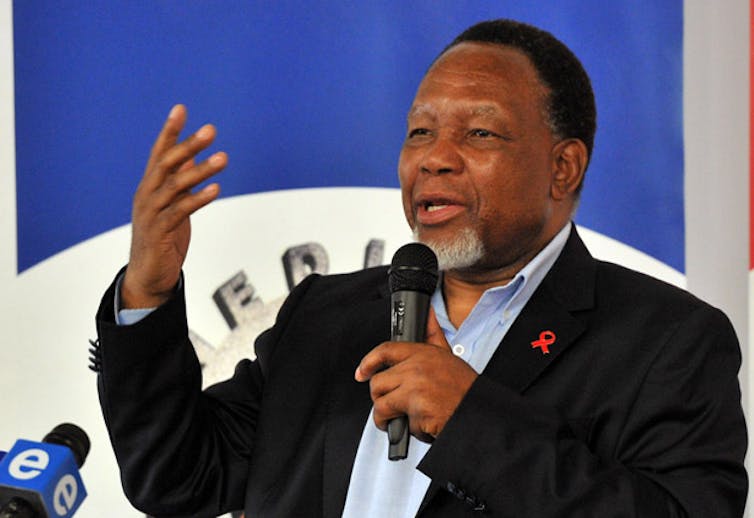
Former SA President Predicts the End of the Ruling Party, History Says He’s Right
Former South African president Kgalema Motlanthe, one of the saner voices in the ruling African National Congress (ANC), has recently given voice to heresy. He has said that the time of the ANC in power is coming to an end. By Roger Southall, University of the Witwatersrand. The party that has dominated South African politics […]

Former South African president Kgalema Motlanthe, one of the saner voices in the ruling African National Congress (ANC), has recently given voice to heresy. He has said that the time of the ANC in power is coming to an end. By Roger Southall, University of the Witwatersrand.
The party that has dominated South African politics since 1994, winning five successive general elections, is confronting a crisis of its own making. This results from poor governance and rampant corruption. A steady decline in support raises the real prospect of gaining less than 50% in the next general election in 2024.
As Motlanthe points out, South African politics is in a state of flux
which must necessarily result in a realignment of political forces.
No ANC figure of his stature has hitherto admitted that the ANC as such might cease to exist. South Africa without the ANC is considered unimaginable.
Motlanthe served as president between the ejection of Thabo Mbeki in September 2008 and the elevation to the post of Jacob Zuma following the April 2009 general election.
The defeat of the ANC would be contrary to liberation movement ideology, which suggests that liberation from settler, colonial or apartheid rule constitutes the end of history. Because the ANC is projected as the party of the people, it is assumed that ANC rule inaugurated the rule of the people and the oppressed. Liberation is thus conceived as an end-state. No other future can be imagined; no other future can be regarded as legitimate.
Yet South African history shows that political parties do not last forever. They fragment, they coalesce, and they change their identities as the political landscape changes.
Faced by the consequences of its poor governance, many in the ANC’s top ranks are worried about its declining popular support. If it loses its outright majority in the 2024 national elections, the ANC will need to enter a coalition with another party. Yet history shows that South African parties that seek to govern by forging unity out of diversity tend to fragment when they are confronted by a fundamental political or economic crisis. Let’s recap.
Fractious party politics in history
At the establishment of the Union of South Africa in 1910, Louis Botha’s Het Volk of the old Transvaal combined with Prime Minister Barry Hertzog’s Orangia Unie of the Free State and the Cape’s Afrikaner Bond to form the South African Party. Subsequently, when South Africa entered the first world war in 1914, an outraged Hertzog, who was bitterly opposed to siding with Britain, left the South African Party to form the first iteration of the Afrikaner-based National Party.
In the 1920 election, the National Party won more seats than the South African Party, which was forced to absorb the Natal-based, jingoistic, pro-British Unionist Party to stay in office. However, having alienated the white working class by suppressing the 1922 Rand Revolt – when white workers’ resistance to plans by mine-owners to replace them with cheaper black labour resulted in armed rebellion – the South African Party lost the 1924 election to an alliance of the National Party and the Labour Party.
After being returned to power with an outright majority in 1929, the National Party ran into the headwinds of the economic depression. Jan Smuts, the leader of the South African Party and prime minister, came to its rescue in 1933, entering into a coalition with Hertzog. This led to the “fusion” of the South African Party and the National Party into the United Party in 1934.
This was treason to the ultra-British wing of the South African Party, which decamped into the Natal-based Dominion Party. More significantly, the formation of the United Party was also sacrilege to the extremist wing of the National Party, which under the leadership of DF Malan crossed the floor of the House of Assembly and formed the opposition, the Gesuiwerde Nasionale Party.
Subsequently, after Hertzog had lost a narrow vote to keep South Africa out of the second world war in 1939, he made way for Smuts as prime minister. Hertzog’s supporters either joined the Gesuiwerde Nasionale Party, which became the Herenigde Nasionale Party, or followed other “Hertzogites” into the small Afrikaner Party. An electoral agreement between the Herenigde Nasionale Party and the Afrikaner Party was subsequently to lead to the defeat of Smuts and the United Party government in the 1948 election.

The National Party retained power for the best part of the next 40 years. Yet it found it necessary, for reasons both political and economic, to make adjustments to Prime Minister Hendrik Verwoerd’s policies of apartheid. It suffered successive breakaways to the right. The first, led by Albert Hertzog (the former prime minister’s son) in 1969, saw the formation of the Herstigte Nasionale Party, which had little impact.
A more serious challenge was presented by Andries Treurnicht’s formation of the Conservative Party in 1982, which grew to become the official opposition in 1987. Its threat was such that it forced the National Party government, now headed by PW Botha, to broaden its support base. It increasingly appealed to English-speakers alongside Afrikaners to retain its majority.
Botha was replaced as leader of the National Party in 1989 by FW de Klerk, who led it through the transition that culminated in the country’s negotiated end of apartheid. He retired in 1997.
Eventually, in 2000, most of the carcass of the National Party, which had lost power to the ANC in the first democratic election in 1994, was absorbed by the Democratic Party, which became the official opposition Democratic Alliance.
Post-apartheid political realignments
Many observers of the current South African scene will query whether this dizzying detour into the history of white political parties is at all relevant to the present. The answer is that it is.
Successive breakaways from the ANC – by the United Democratic Movement in 1997, the Congress of the People in 2008 and, most consequentially of all, the Economic Freedom Fighters in 2013 – reflect the inherently fractious nature of South African politics, whether it has been under white minority rule or, as now, under a democratic dispensation.
That’s why successive ANC governments have lent such strong support to the Zanu-PF government in Zimbabwe. The ANC fears Zanu-PF’s defeat in an election will collapse the myth of the inviolability of liberation movements in southern Africa.
It is still early to predict the decease of the ANC. Yet all the signs of terminal disease are there. It has become thoroughly corrupt; it appears unable to reform itself; and it appears increasingly unable to govern the country, whether that be at national, provincial or municipal level.
All its politicians are frightened to be the ones to break the ANC apart. Yet events – whether this be electoral defeat, mass revolt, economic failure or whatever – are likely to force their hand. Potential partners will be reluctant to identify themselves with a failing party. They may well demand the formation of a completely new party, with a new name, a new programme and a new brand.
This is a reminder that South African parties have changed over time because the country is difficult to govern. It is a nation of very diverse regions, peoples, religions and ideologies. A ruling party has somehow to cobble all these elements together if it wants to stay in power.
It is no wonder that any ruling party in South Africa finds it difficult to maintain internal coherence and unity over an extended time span. The long and the short of this potted history is that no South African party has shown its capacity to last forever.![]()
Roger Southall, Professor of Sociology, University of the Witwatersrand
This article is republished from The Conversation under a Creative Commons license. Read the original article.
